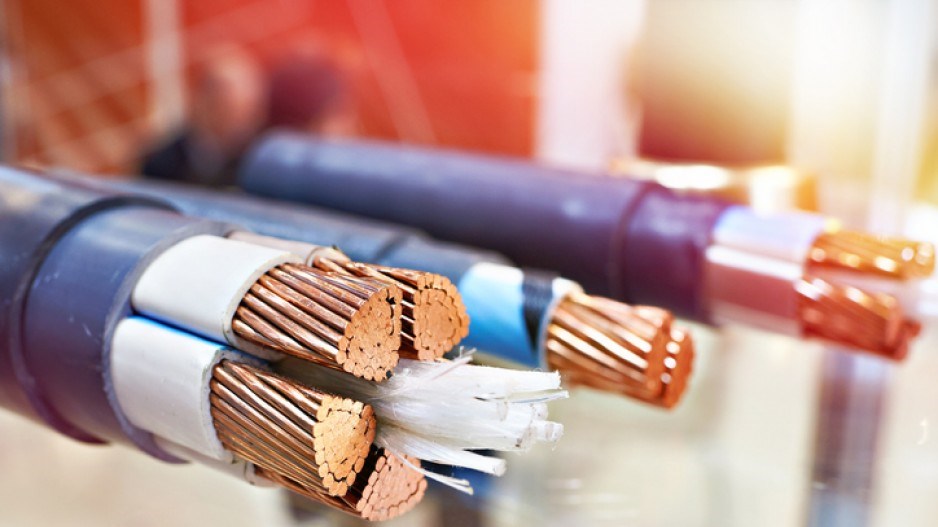The CEO of one of B.C.’s biggest copper mines believes the “ultimate death” of the carbon economy will fuel new investments in infrastructure and responsible mining projects.
“Fundamentally, I believe that we are in one of these once-in-a-century economic changes, and that’s fundamentally driven by the ultimate death of our carbon-based economy – which is a mature economy now – and the transition to a green energy economy,” said Gil Clausen, president and CEO of Copper Mountain Mining Corp. (TSX:CMMC), which operates Copper Mountain near Princeton.
According to Michael Goehring, president and CEO of the Mining Association of BC, this “once-in-a-lifetime pivot point” presents a significant opportunity for the province’s mining industry and broader economy.
“Mining as an industry is an exciting place to be right now,” he said during a panel discussion on responsible mining at the BC Natural Resources Forum last week. “Mining as an industry is being viewed as a solution.”
Metals and minerals such as those found in B.C. play a necessary part of economies’ transition to cleaner energy sources and more environmentally friendly products.
“Copper is a critical element in our transition to a global green energy economy. Wind turbines, electric vehicles and energy distribution systems all rely on copper, and we expect demand will continue to grow,” said Clausen, adding that Copper Mountain Mining is “fully committed” to that broader economic transition.
But miners’ ability to supply that transition with sufficient resources to meet demand is not without its barriers. The sheer length of time it can take to get a project approved, built and operating can restrict supply. Weak commodity prices can also erode the economic viability of resource extraction.
“We’re going to see a gap between supply and demand, and I think that’s going to be quite significant,” Clausen said.
At the time of writing, the spot price of copper was about US$3.60 per pound, according to Kitco Metals – around the highest price the metal has fetched in the last five years. Its 60-year peak was nearly a decade ago, at close to US$4.50 a pound.
“There are a lot of projects that are marginally economic, unfortunately, in B.C. right now with current copper prices, but we could really see that change overnight and wake up a few years from now and have $6 copper,” said Kelly Earle, vice-president of communications with Skeena Resources Ltd. (TSX: SKE).
Earle noted that there has been some global interest in B.C. copper projects. Last year, for example, Australia’s Newcrest Mining Ltd. (TSX:NCM) acquired a large copper and gold land package from Skeena Resources for $7.5 million.
“The key factor though is really going to be the price of copper,” she said.
In addition to supporting a climate-conscious pivot to clean energy, B.C. miners are looking inward, and focusing on reducing their emissions and environmental footprints.
Copper Mountain Mining has committed to achieving carbon neutrality by 2035, and is striving to be one of the lowest greenhouse gas-emitting open-pit copper mines globally in the next 10 years. This year, it will implement Phase 1 of its electric trolley assist project, to reduce diesel consumption.
Pretium Resources Inc.’s (NYSE, TSX:PVG) Brucejack Mine in northwest B.C. emits 0.05 tonnes of carbon dioxide equivalent per ounce of gold – 10 times below the average emissions of intermediate gold producers, said company president and CEO Jacques Perron. Pretium is testing battery-powered electric haul trucks to replace the diesel trucks it uses underground.
“Responsible mining, at the end of the day, for me it means that we care,” said Perron. “Responsible mining is making sure that we consider everybody, and we look at all possible ways to minimize the impact of our activities.”
Skeena Resources is working to advance the second chapter of the Eskay Creek Mine project, which previously operated as an underground mine powered entirely by diesel. This next phase is envisioned as an open-pit operation that will run on green energy, a transition made possible by a hydroelectric power station less than 10 kilometres away.
“We are leading the way in building an economy that runs on green power,” said Earle.




